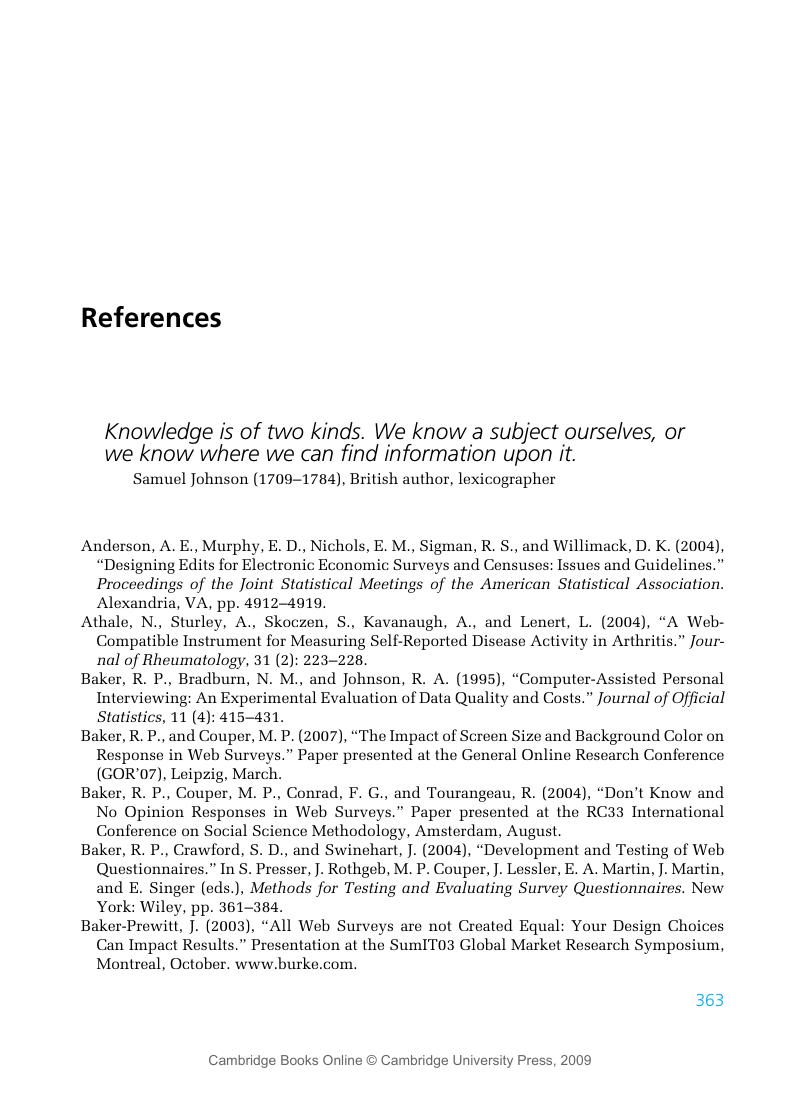Book contents
- Frontmatter
- Contents
- Acknowledgments
- Preface
- Acronyms and Abbreviations
- 1 The Importance of Design for Web Surveys
- 2 The Basic Building Blocks
- 3 Going Beyond the Basics: Visual and Interactive Enhancements to Web Survey Instruments
- 4 General Layout and Design
- 5 Putting the Questions Together to Make an Instrument
- 6 Implementing the Design
- References
- Author Index
- Subject Index
- References
References
Published online by Cambridge University Press: 05 August 2012
- Frontmatter
- Contents
- Acknowledgments
- Preface
- Acronyms and Abbreviations
- 1 The Importance of Design for Web Surveys
- 2 The Basic Building Blocks
- 3 Going Beyond the Basics: Visual and Interactive Enhancements to Web Survey Instruments
- 4 General Layout and Design
- 5 Putting the Questions Together to Make an Instrument
- 6 Implementing the Design
- References
- Author Index
- Subject Index
- References
Summary

- Type
- Chapter
- Information
- Designing Effective Web Surveys , pp. 363 - 388Publisher: Cambridge University PressPrint publication year: 2008



